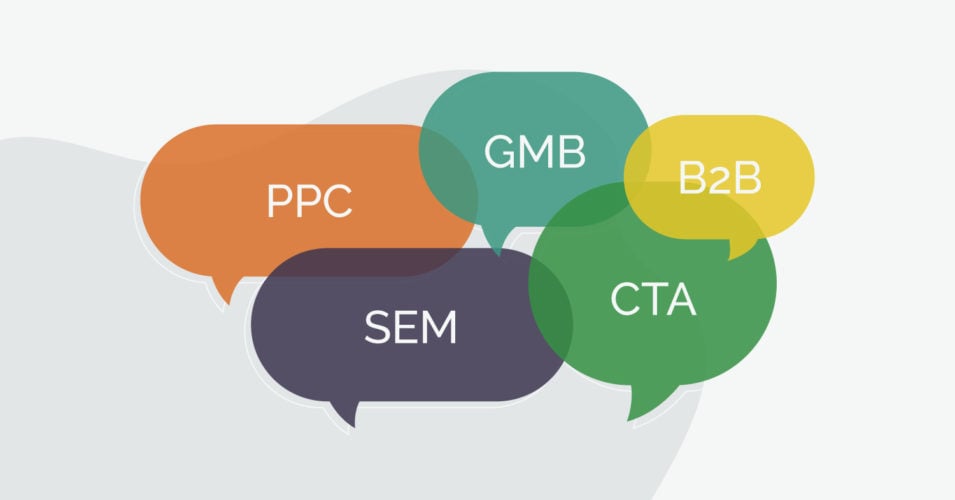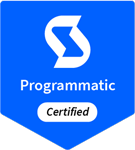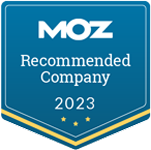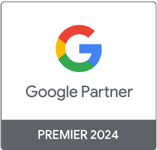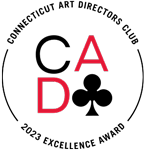Have you ever had a Zoom call with your agency, and they keep throwing out marketing terms you don’t understand? Maybe just when you think you remember one, a brand new acronym pops into the conversation. From CTA to ROI, people among all industries face this new language barrier — you’re not alone!
That’s why Zero Gravity Marketing (ZGM) is here to help you with our ultimate marketing acronym cheat sheet. You can use it for yourself or pass it along to your department. No matter what situation you find yourself in, this will serve as a guide to keep handy whenever tricky marketing lingo comes up on your next call:
Every Marketing Acronym You Ever Need to Know
A/B Testing: Also known as split testing, A/B testing is when you use two variables of the same webpage or digital ad to determine which one resonates most with your audience.
AOV (Average Order Value): Better explained as the average amount people spend when they make a purchase.
API (Application Programming Interface): API allows two applications to talk to each other.
B2B (Business to Business): A business model that focuses on selling products and services to other companies instead of individual consumers.
B2C (Business to Consumer): The opposite of B2B, it’s the process that happens when businesses sell directly to consumers.
BR (Bounce Rate): BR describes the percentage of people who land on your webpages and do nothing but leave as soon as they get there.
CCPA (California Consumer Privacy Act): A landmark law that secures new privacy rights for California consumers, including the right to know about the personal information a business collects from them and how it’s used and shared.
CMS (Content Management Systems): CMS is used to manage web content so multiple people can contribute, create, edit, and publish the words that go out into the world.
CPA (Cost per Acquisition): A marketing metric that measures the aggregate cost to acquire one paying customer on a campaign or channel level.
CPC (Cost per Click): The amount of money you spend each time someone clicks on one of your digital ads.
CPL (Cost per Lead): The amount of money you spend to gain a new lead.
CPM (Cost per Thousand Impressions): The total amount you’ll pay for 1,000 impressions on your page when you place an advertisement.
CR (Conversion Rate): The percentage of people who convert into paying customers after visiting your site.
CRM (Customer Relationship Management): Technology that enables you to manage all of your companies’ relationships and interactions with current and potential customers.
CRO (Conversion Rate Optimization): The practice of raising your conversion rate by enticing site visitors to take specific actions such as buying a product, downloading a whitepaper, or subscribing to a newsletter.
CTA (Call to Action): This is an invitation for users to take some desired action with your content. For example, “Contact us now!” or “Subscribe to our newsletter.”
CTR (Click-Through Rate): A metric that measures the number of clicks you receive on your ads per the number of impressions.
DA (Domain Authority): A measurement of your domain’s reputation that helps predict how well it will rank on search engine results pages (SERPs). The higher the domain authority, the higher your site will likely rank.
DM (Direct Message): A personal form of communication between social media users.
DNS (Domain Name System): A DNS translates domain names into IP addresses so computers can comprehend them. It also supplies a list of mail servers that receive and allow emails for each domain name.
DPA (Dynamic Product Ad): DPAs are personalized advertisements according to your consumer data. They change automatically to adapt content and promotions specifically to each user, so every person is exposed to the most effective content based on their searches.
DR (Domain Ranking): A score that determines how likely a page is to rank high in the search results.
EOD (End of Day): An abbreviation for the end of the day.
EOW (End of Week): An abbreviation for the end of the week.
GA (Google Analytics): An online toolset that gives you insights into your advertising return on investment (ROI), allowing you to track and understand your customer’ behaviors, user experiences, online content, and more. GA4 is Google Analytics 4, the next generation of the service.
GCLID (Google Click Identifier): A tracking ID attached to ads. When a user clicks on an ad in the search results, the GCLID links it back to your ad campaign, so you track the results of your ad campaign easily.
GDPR (General Data Protection Regulation): A legal structure with set rules for collecting and processing personal information from individuals who live in the European Union (EU).
GDS (Google Data Studio): It is a free tool that turns your data into informative, easy-to-read, and fully customizable dashboards and reports.
GMB (Google My Business): A free and easy-to-use tool that helps local businesses manage their digital footprints across Google, including Search and Maps.
GSC (Google Search Console): A dashboard with tools and reports that give insight into your site’s search traffic and performance. It also helps you understand which issues need to be fixed and how to shine in the search results.
GTM (Google Tag Manager): GTM allows you to manage all of your website tags without editing code.
H1 (Level 1 Heading Markup): An HTML tag that indicates a heading or title on a website. It should contain your targeted keywords.
H2 (Heading 2 Markup): H2s break up the text on a webpage, making it more scannable.
HTML (HyperText Markup Language): The standard markup language for documents designed to be displayed in a web browser.
IP Address (Internet Protocol Address): A numerical label assigned to each device connected to a computer network.
IS (Impression Share): The number of impressions on a search site divided by the estimated number of eligible impressions. IS helps you determine the available search inventory for your keywords.
KW (Keywords): Any word or phrase that people enter into search engines to retrieve the information they’re looking for. The search engines use keywords to understand what your pages tell your audience, so they know if they should include your site in the SERPs.
KPI (Key Performance Indicator): A measurable assessment that demonstrates how successfully your company is achieving key objectives.
LPO (Landing Page Optimization): The process of improving a landing page to get more conversions.
LTV (Lifetime Value): How much money a customer will bring your brand throughout their entire time as a paying customer.
MoM (Month Over Month): Growth over two or more months is tracked and monitored.
MTO (Meta Tag Optimization): The process of improving meta tags to boost a page’s ranking in the search results.
NAP (Name, Address, Phone Number): Business information that’s critical when you set up your online company’s online accounts. This information needs to be consistent across all digital platforms.
OBL (Outbound Links): Links that direct away from your site to another website.
PPC (Pay-Per-Click) An online marketing model in which you pay a fee each time someone clicks on your digital advertisement.
PR (Public Relations): Strategic communication process that builds mutually beneficial relationships between organizations and their audiences.
PTR (Phone-Through Rate): It shows you the number of phone calls received divided by the number of times your phone number was shown. It’s useful for marketers who value phone calls. It also illustrates how frequently users make a phone call versus engaging with your brand online.
PV (Page View): A user viewing a webpage.
QS (Quality Score): Which estimates the relevance of your ads, keywords, and landing pages to a visitor who sees an ad. The higher your QS, the lower your ad costs and the better your ad positions. Google, in particular, ranks ads based on the QS, so that users see the ads most relevant to their search.
RDA (Responsive Display Ads): Advertisements that adjust their size, appearance, and format without manual intervention, so it fits available ad spaces on Google’s display network.
ROAS (Return on Ad Spend): A marketing metric that measures the amount of revenue your business earns for each dollar it spends on advertising.
ROI (Return on Investment): A profitability metric used to evaluate how well your investment is performing. It’s calculated by subtracting the asset’s initial value from the investment’s final value, then dividing this new number by the investment cost. Finally, this number gets multiplied by 100.
RT (Retweet): The reposting of a tweet on Twitter.
SaaS (Software as a Service): A way of delivering applications over the internet as a service.
SEO (Search Engine Optimization): The practice of increasing the quantity of traffic that goes to your website and the quality of leads generated by your efforts through organic search engine results.
SEM (Search Engine Marketing): The process of gaining traffic to your company’s site by purchasing ads on Google and other search engines.
SERPs (Search Engine Results Pages): Webpages served to users when they search for something on a search engine.
SLA (Service Level Agreement): A commitment between a service provider and a client.
SMM (Social Media Marketing): The use of social media platforms and websites to promote a product or service.
SOW (Scope of Work): An agreement on the work that’s going to be performed on a specific project. The document usually includes deliverables, a timeline, milestones, and reports.
SWOT (Strengths, Weaknesses, Opportunities, Threats): A technique used to analyze and assess these four critical aspects of your business.
UI (User Interface): How the user and a computer system interact, particularly with input devices and software.
UVP (Unique Value Proposition): A clear statement that describes your businesses’ benefits, how you solve your customers’ needs, and what distinguishes you from the competition.
UX (User Experience): An all-encompassing term that describes every aspect of the end user’s interaction with your company.
YoY (Year Over Year): Measures statistical changes against the same period the year before.
YTD (Year to Date): A period starting from the beginning of the current year and continuing up to the present day.
Learn More About Marketing Terms From ZGM
If you’re feeling lost in a sea of jargon and phrases you can’t make sense of, let our team at Zero Gravity Marketing help guide you. Contact us today to learn more!
